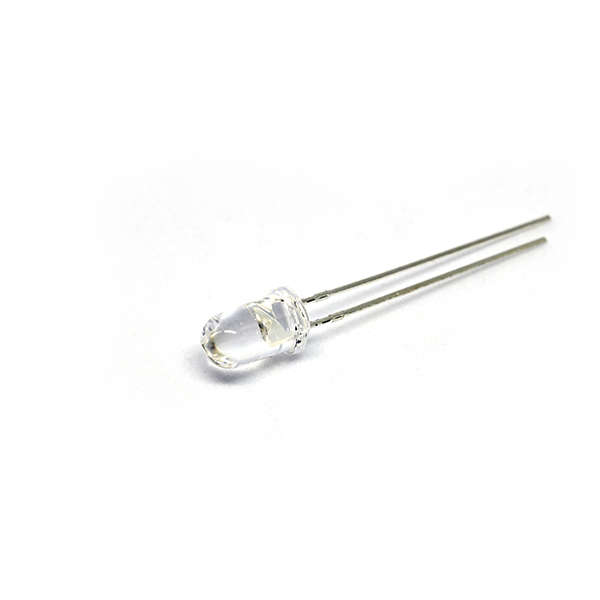What is the voltage supply for infrared emitting LED chips? This question may sound simple at first, but in reality, the answer is not fixed. It depends on various factors, including the manufacturing materials, design structure, working environment, and application requirements of the lamp beads. Next, let's delve into the power supply issue of infrared emitting LED chips.

Firstly, we need to understandInfrared emitting LED beadsThe basic working principle. LED, Light emitting diodes are semiconductor devices that can convert electrical energy into light energy. Infrared emitting LED beads, on the other hand, are a type of LED with a specific wavelength range, emitting light that belongs to the infrared category and is commonly used in fields such as remote control, night vision, and security.
In terms of power requirements, the voltage range of infrared emitting LED chips is usually narrow. Generally speaking, its forward working voltage is between 1.2V and 2.0V, which is the minimum voltage required for LED chips to emit light normally. However, in practical use, we also need to consider the influence of current. Because the brightness of LED beads is directly proportional to the current, in order to obtain sufficient brightness, we need to provide sufficient current to the beads. However, excessive current can also cause the lamp beads to heat up, shorten their lifespan, or even be damaged. Therefore, choosing the appropriate power supply and current limiting resistor is very important.
In addition, we also need to consider the stability of the power supply. If the power supply voltage fluctuates too much, it will directly affect the stability and lifespan of LED chips. Therefore, when choosing a power supply, we should try to choose a power supply with stable output voltage and low ripple.
Of course, for different application scenarios and requirements, the power supply for infrared emitting LED chips will also vary. For example, in some applications that require high brightness and long-distance transmission, we may need to use a higher voltage power supply to drive LED beads for stronger transmission power and longer transmission distance. In some low-power and miniaturized applications, we may need to choose a lower voltage power supply to reduce the power consumption and volume of the entire system.
In addition to direct driving, we can also adjust and control the power supply of infrared emitting LED chips through some circuit technologies. For example, using a constant current source circuit can ensure that LED chips can obtain stable current at different voltages, thereby maintaining stable brightness. The use of PWM (Pulse Width Modulation) technology can achieve precise control of LED bead brightness, thereby meeting different application requirements.
Overall, the power supply issue of infrared emitting LED chips is not simply a matter of voltage values, but involves a comprehensive consideration of multiple aspects. When choosing a power supply, we need to determine the appropriate voltage range and current size based on the specific application scenario and requirements, and achieve regulation and control of the power supply through appropriate circuit technology. At the same time, we also need to pay attention to the stability and safety of the power supply to ensure the normal operation and long-term use of the entire system.
With the continuous development of technology, the performance and application of infrared emitting LED chips are also constantly improving and expanding. In the future, we have reason to believe that through continuous optimization of power supply design and circuit technology, infrared emitting LED chips will play a greater role in more fields, bringing more convenience and innovation to human life.
In specific applications, we also need to pay attention to the heat dissipation of infrared emitting LED chips. Due to the heat generated by LEDs during operation, poor heat dissipation can lead to an increase in the temperature of the LED beads, affecting their luminous performance and lifespan. Therefore, when designing and using infrared emitting LED chips, we need to fully consider heat dissipation factors to ensure that the chips can work properly and maintain good performance.
In addition, with the rapid development of fields such as the Internet of Things and smart homes, the application scenarios of infrared emitting LED beads are constantly expanding. For example, in smart homes, infrared emitting LED beads can be used as part of remote control devices to achieve remote control of household appliances; In the field of the Internet of Things, infrared emitting LED beads can be used for data transmission and communication, providing convenient connection methods for various smart devices.
Overall, the power supply issue of infrared emitting LED chips is a complex and important topic that involves multiple factors. In practical applications, we need to consider various factors comprehensively according to the specific situation, choose appropriate power supply and circuit technology to ensure that the infrared emitting LED beads can work normally and perform at their best. Meanwhile, with the advancement of technology and the continuous expansion of application scenarios, we have reason to believe that infrared emitting LED beads will play a greater role in the future, bringing more innovation and convenience to our lives.
Address: 5th Floor, Building 12, Changfeng Industrial Park, Dongkeng, Fenghuang Street, Guangming District, Shenzhen, Guangdong Province
Tel: 13632942401
Email: led_best@163.com
Copyright © 2023 Tianshi All Rights Reserved 粤ICP备2021179733号